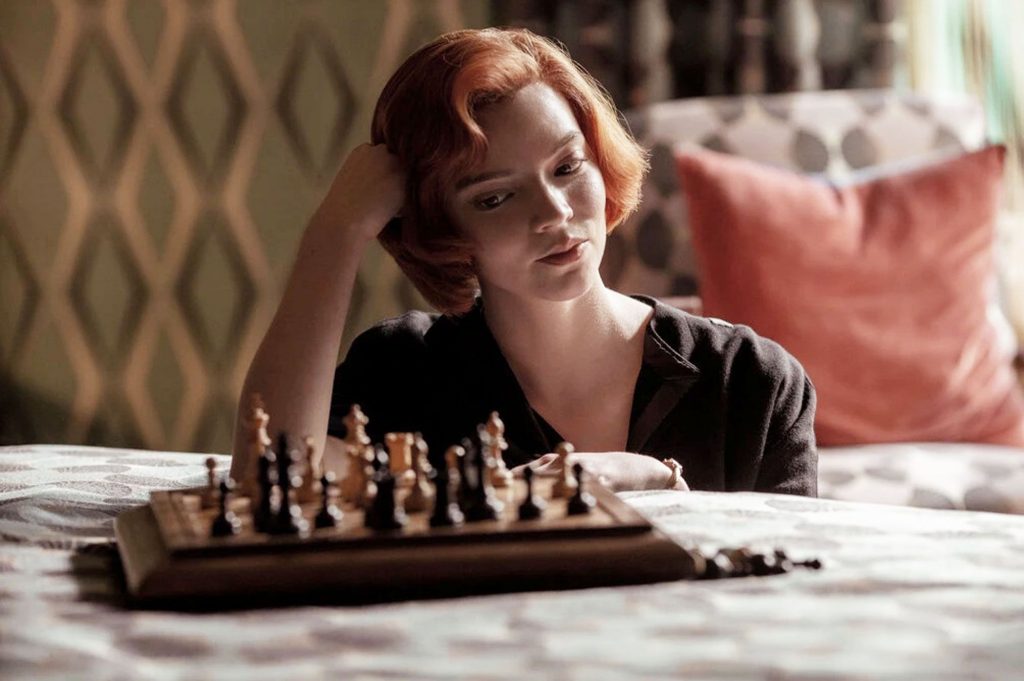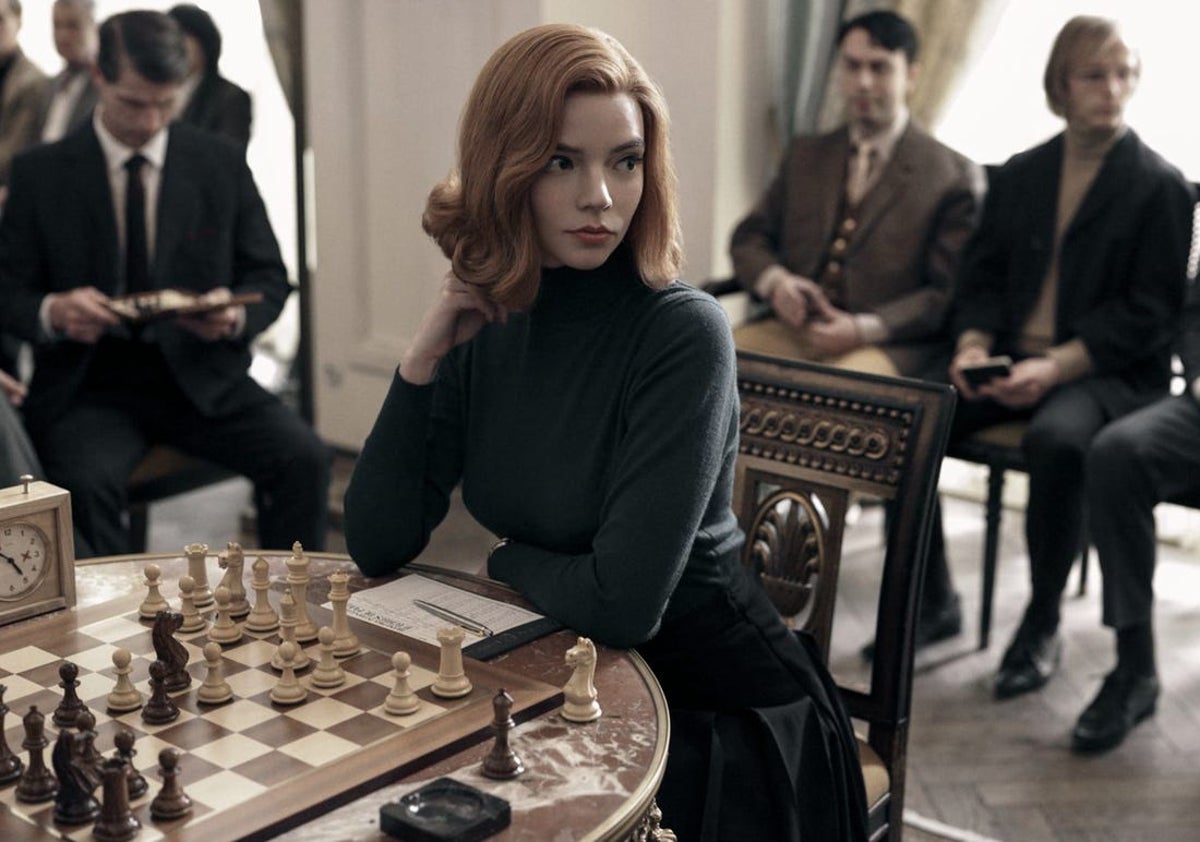The Queen’s Gambit starts with a young woman in Paris rising out of a bathtub in her hotel room, messily getting dressed and swallowing a few pills. She hurries downstairs to join a chess match with the current world champion. As she starts the game, we flash back to her early life, as her mother dies in a car crush and she is sent to live in an orphanage.
Chess can hardly be described as being exciting. It is easy to understand but hard to master, and the level that Beth Harmon, the protagonist, plays at is beyond the reach of most ordinary people. There have been movies focused on chess before, like Pawn Sacrifice, but none of them have especially resonated with a large audience.
The Queen’s Gambit may change all of that. Adapted by Scott Frank from a 1983 novel by Walter Tevis, it depicts each chess match with a story of its own. All of these matches were designed by chess consultants Bruce Pandolfini and Gary Kasparov, and although there is a considerable amount of time devoted to characters researching old chess matches and strategies, the series still seems largely accessible to a mainstream audience.
Like The Crown, The Queen’s Gambit has lavish production design and costuming. It even uses makeup to make a point about the narrative, with Beth applying thick eyeliner during a time when she looks thin and gaunt.
Anya Taylor-Joy’s performance as Beth Harmon is suitably subtle. She’s always telling a story through her chess matches. For instance, in one match, she humiliates her opponent, getting up and walking away after making her move, taking a walk through the room before returning to make her next move, only to walk away again. As Beth grows up, Taylor-Joy infuses more confidence into her role, from the way she walks to how she reacts to new developments in her life.

The supporting cast is also robust, from Bill Camp’s Mr. Shaibel, who teaches Beth how to play chess in the basement of the orphanage, to Thomas Brodie Wyatt’s Ben Wyatts, a US champion who later becomes a close ally to Beth. There’s also Harry Melling, who plays another chess player, Harry Beltik, who grows hopelessly enamored with Beth over the years, and Marielle Heller, whose performance as the complicated housewife (and Beth’s adoptive mother) Alma lends the series a jilted, suburban wistfulness that abates once she discovers that Beth’s hobby can earn her a good deal of money.
There are some minor pacing problems, especially with the middle section. Beth doesn’t lose a chess match until halfway through the series; although it’s a foregone conclusion that she will win most, if not all of her matches, it doesn’t take away from the tension when you see her go up against formidable grandmasters. There’s also her battle with addiction, which only reaches critical mass late into the series, but a convenient reconciliation with one of her childhood friends, Jolene, gets her back to her usual self just in time for the final chess tournament in Moscow. Although the series doesn’t shy away from the fact that Beth is a woman in a game dominated by men, she doesn’t encounter the casual sexism that was prevalent in the sixties.
The Queen’s Gambit is one of Netflix’s better releases this year, making good uses of its seven episodes. It ends on a positive note, with Beth embracing her roots after an important win, and for the moment, her troubles seem to be behind her. It’s the kind of fantasy that us ordinary folks dream of quite often, and that’s why inspiring sports stories are so powerful. For the space of seven hours, you feel tangibly close to a master at work and can almost imagine yourself in her shoes. If she can overcome odds, maybe so can you.







